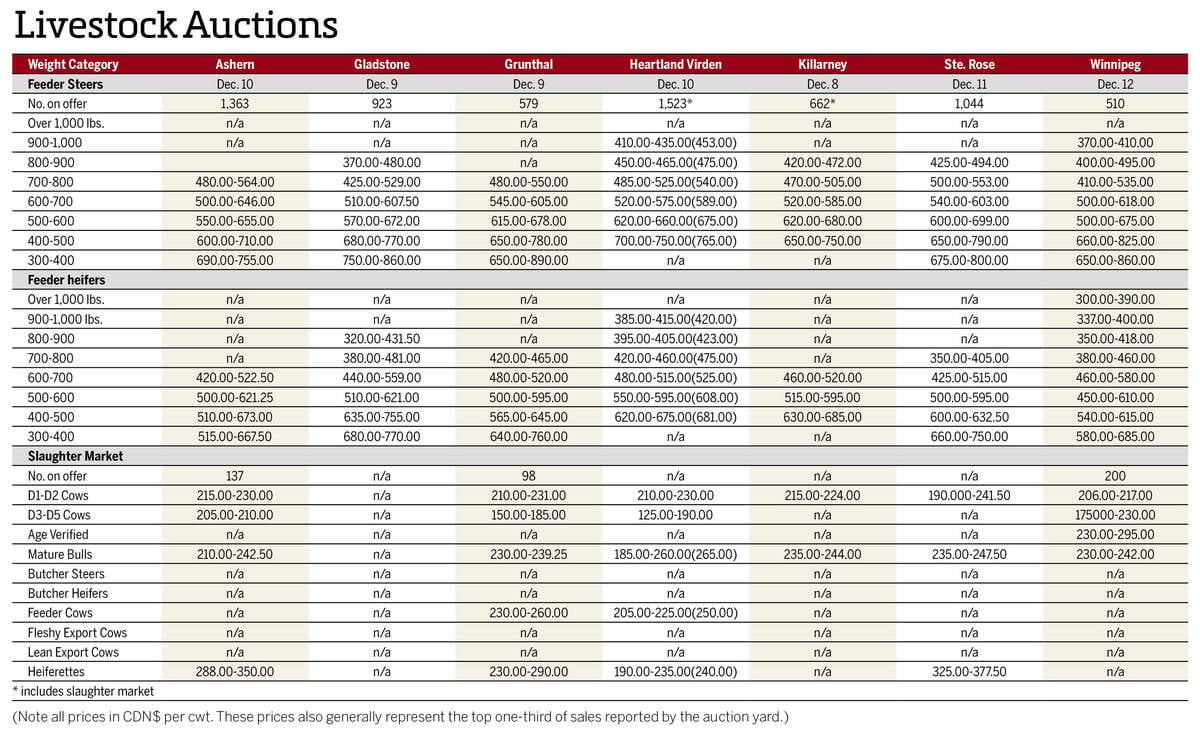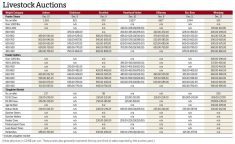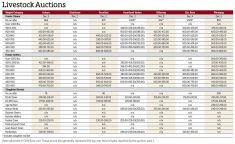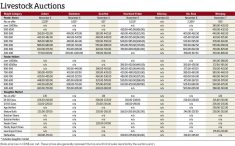The past president of Manitoba Beef Producers, Tyler Fulton, is pleased with how the 2023-24 marketing year ended.
Fulton, the organization’s second vice-president as well as vice-president of the Canadian Cattle Association, said sales this spring were excellent.
“For April and May, those key months for selling grassers that will go on the grass for the summer, prices were up 20 per cent from a year ago, and a year ago was a pretty significant jump from the year before that,” he said. “All in all, we’re in a pretty good trajectory for cattle markets across Canada.”
Read Also

Manitoba cattle prices Dec. 16
Here’s what local farmers were getting paid last week for their cattle at Manitoba livestock auction marts; prices covering the week Dec. 8-12, 2025.
Fulton said margins for feeder cattle are good as feed costs decline year by year, while demand for cattle in Manitoba remains “exceptional.”
“Obviously (buyers are) paying higher prices for our calves and for our feeder cattle, but there’s still some margin there to be penciled out. As far as demand from packers and from feedlots, I think it’s really good.
“From a consumer standpoint, the demand index has held up really well, considering the high prices.”
However, Manitoba cattle producers did face obstacles this summer. Hot and humid temperatures prevented hay from effectively drying and some low-lying areas were flooded.
Movement of cattle across the country was adversely affected when workers at Cargill meat processing plants in Guelph, Ont., took strike action and workers in Calgary threatened to do so. Workers at both facilities ratified new agreements with management earlier this month.
“We saw scenarios where cattle were moving much longer distances to compensate. How that manifested itself in crisis was generally softer basis levels, especially in the eastern market, but it probably had an influence in the west as well,” Fulton said.
“It was very good news that we learned they came to an agreement. Thankfully, it didn’t have a material impact on the busiest movement time period that we’re probably approaching in the next two months.”
Overall, Fulton said he is looking forward to the fall run.
“If spring was any indication, a 20 to 30 per cent increase wouldn’t be out of the question. I think the right way to describe it is cautiously optimistic, but I think we could see profitable prices for cattle producers.”
Only three auction sites in Manitoba held sales during the week: Grunthal Livestock Auction Mart and both Heartland Livestock Services sites in Brandon and Virden. Feeder steers weighing 500 to 600 pounds ranged from $425 to $465 per hundredweight at the sale in Virden on July 24, compared to $395 to $465 the week before. Most feeder heifers in the same weight class went for $360 to $400/cwt., unchanged from one week earlier.
D1 and D2 cows sold for $185 to $201/cwt., while most mature bulls were priced at $155 to $225/cwt. Prices for both were unchanged from the previous week.
At the Chicago Mercantile Exchange, October live cattle futures hit a nine-month high at US$189.050/cwt. before closing at $188.600 on July 25, a weekly gain of $5.575. Meanwhile, the August feeder cattle contract showed volatile trading during the week, closing at $258.625/cwt. on the same day, up $2.400 from one week earlier.
















